Talk about striking gold! Time Team fan uncovers a huge hoard of Roman coins in a field in North Wales
>
A pair of novice metal detectors have discovered a massive Roman hoard of 2,733 coins worth tens of thousands of pounds.
David Moss (34 years old) and Tom Taylor (35 years old) found an impressive amount of silver coins and copper alloys dating back to the second and third centuries AD in a ceramic bowl in a muddy field.
Tom is an avid Time Team watcher, so, with official permission, he and David dug up the vessel, which was 12 inches below the surface, before wrapping it in bandages.
The bowl was later examined using a CT scan which showed it was filled with ancient coins.
It is believed to date back to the reigns of Postumus (260-269 AD) and Victorinus (269-271 AD) and was found near the remains of a Roman temple in North Wales that was excavated ten years ago.
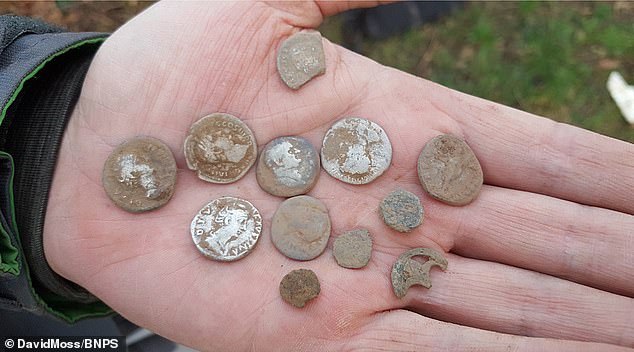
A pair of novice metal detectors have discovered a massive Roman hoard of 2,733 coins worth tens of thousands of pounds.
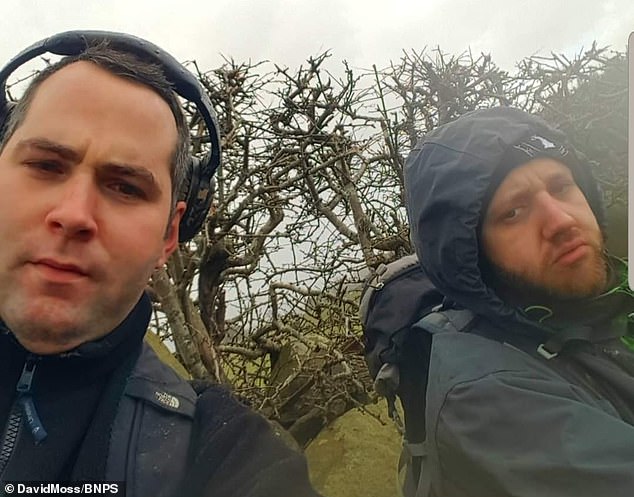
David Moss (left), 34, and Tom Taylor, 35 (right), found an impressive quantity of silver coins and copper alloys dating back to the 2nd and 3rd centuries AD in a ceramic vessel in a muddy field.
The vessel also contains silver denarii coins (69-150 AD) minted more than a century ago.
Experts believe it was deposited at Kerhun Field, Conwy Valley, possibly by a Roman soldier as an offering due to the religious significance of the site.
The hoard was declared a hoard by North Wales Assistant Coroner, Kate Robertson.
In time, it will be transported to London for appraisal, with any proceeds split between the finders and the landowner.
David, a supplier of agricultural goods near Liverpool, said it was the first time he and electrician Tom, from Stockton-on-Tees, Teesside, had explored a field after trying the hobby on the beach.
“We had just started metal detecting when we made these completely unexpected discoveries,” he said.
“This was our first time on farmland after doing some exploring on the beach a month ago.
“On the day of discovery, it was raining hard, so I looked at Tom and headed across the field to him to ask him to finish the day.
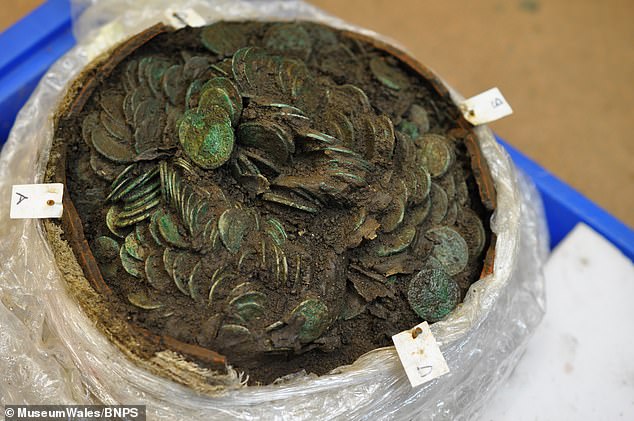
Tom is an avid Time Team watcher, so, with official permission, he and David carefully excavated the vessel, which was 12 inches below the surface, before wrapping it in bandages.
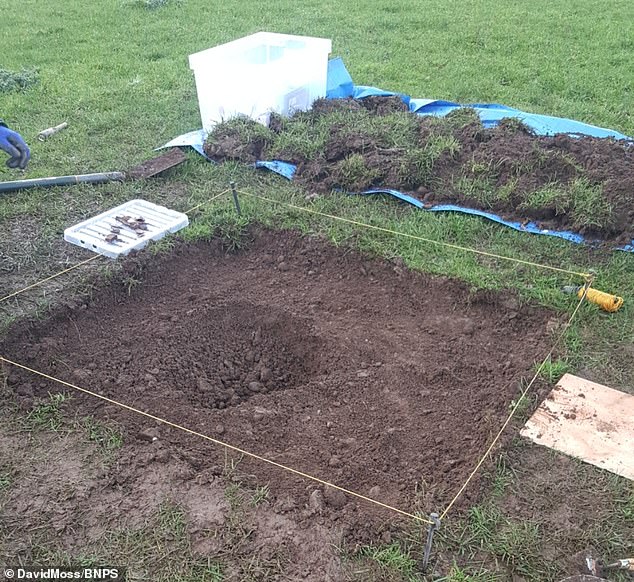
“We contacted the discoverer liaison officer and he gave us permission to collect the coins, so we recovered the ship using techniques Tom knew from watching Time Team,” David said.
“Suddenly, I accidentally cut a deep object to emit a signal.
“It was a big surprise when I drilled down 12 inches and finally revealed the top of the bowl that held the coins.
I wasn’t sure what I’d found, but Tom looked at them and said, Oh my God, they’re Roman coins!
“We contacted the discoverer liaison officer and he gave us permission to collect the coins so we recovered the ship using techniques Tom knew from watching Time Team.
“Some discoverers have never found a Roman coin in their lives, so I can’t believe we’ve found a treasure.
“People don’t realize how much work goes on behind the scenes at the National Museum, from excavating the coins to caring for them and identifying them so they can be reported as treasure.
“It’s a huge process to be able to see the work unfold.
“Being directly involved as discoverers is an amazing experience.
“The treasure must be transported to London to be evaluated, but for us it is not about the money. We are history hunters rather than treasure hunters.”
Alastair Willis, senior curator at the Department of Welsh Numismatics and Economics, said: “The coins in this hoard appear to have been collected over a long period of time.”
“Most of them appear to have been placed in the bowl during the reigns of Postumus (260-269 AD) and Victorinus (269-271 AD), but the two silver coin bags appear to have been collected much earlier during the first decades of the Renaissance.” Third century AD.
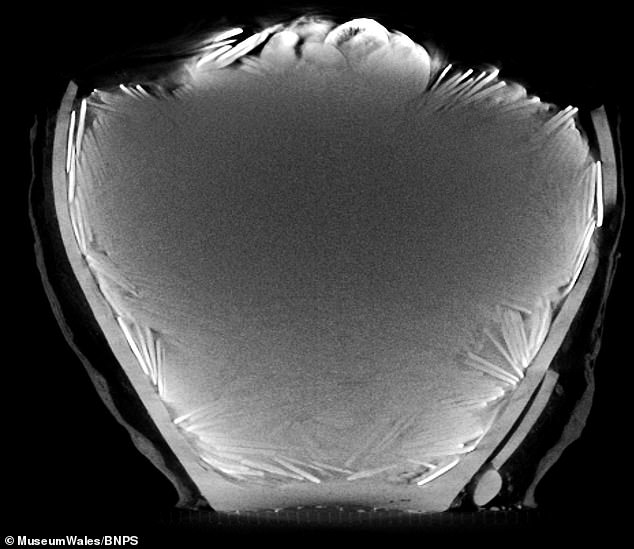
The bowl was later examined using a CT scan which showed it was filled with ancient coins
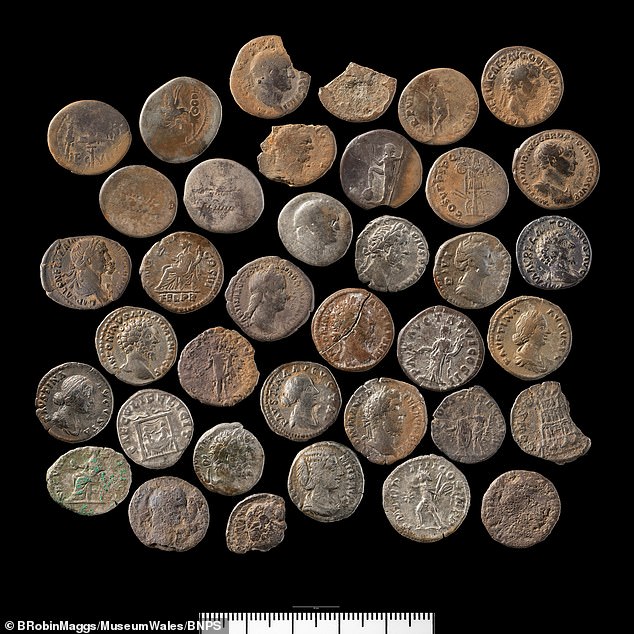
Experts believe the coins were deposited at Kerhun Field, Conwy Valley, possibly by a Roman soldier as an offering due to the religious significance of the site.
“The smaller hoard was likely buried in 220 AD. The two hoards were found near the remains of a Roman building that was excavated in 2013 and identified as a possible temple dating back to the 3rd century AD.
“The discovery of these treasures supports this proposal.”
“It is very likely that the treasures were deposited here because of the religious significance of the site, perhaps as votive offerings, or for safe keeping under the protection of a temple deity.
“The coins may have been owned by soldiers at the nearby Roman fort of Canuvium (located near Caerhun).”
Louise Mumford, senior curator of archeology at the Museum of Wales, added: “In the conservation laboratory, investigation of the top of the vessel quickly revealed that some of the coins had been contained in bags made of very thin leather, and traces of them remained.”
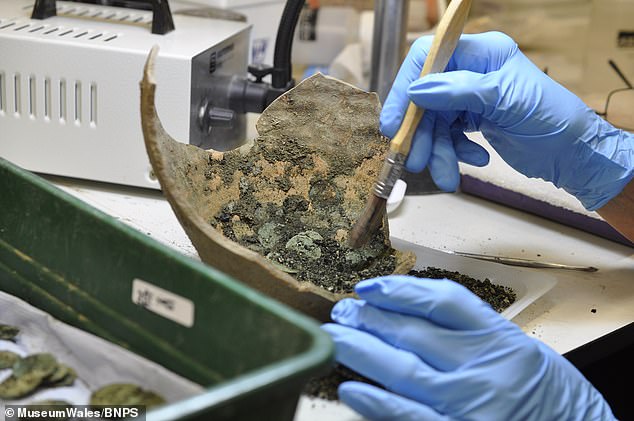
Louise Mumford, senior curator of archeology at the Wales Museum, added: “In the conservation laboratory, investigation of the top of the vessel quickly revealed that some of the coins had been contained in bags made of very thin leather, traces of which remained.”
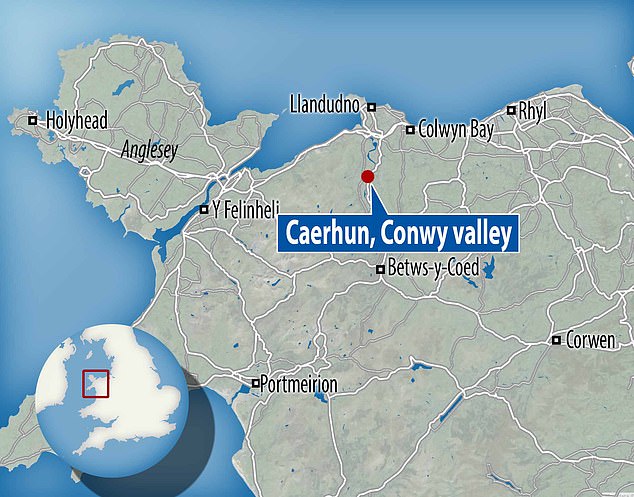
The astonishing quantity was discovered in a field at Caerhun in the Conwy Valley
“It’s very rare for organic matter like this to survive in soil.
“The remaining parts, which included two pieces of stitched seam, have been preserved and will provide information about the type of leather used and how the bags were made.”
Llandudno Museum is keen to acquire these two important treasures with support from Conwy Cultural Center and the Wales Museum.
Museum director Dawn Lancaster said: “This is very exciting news for Llandudno Museum.
“The opportunity to purchase these important coins associated with the Roman fortress of Canuvium will allow future generations to see and experience a large collection of ancient silver coins dating back to 32 BC and representing 50 rulers.”
“Llandudno Museum contains all previous finds from excavations at the Roman castle of Canuvium located at Caerhun in the Conwy Valley, so it is appropriate to place the hoard in context with the rest of the artefacts.
“We can share the story of their discovery and the importance these amazing discoveries have to our region’s Welsh cultural heritage.”
(tags for translation) Daily Mail
